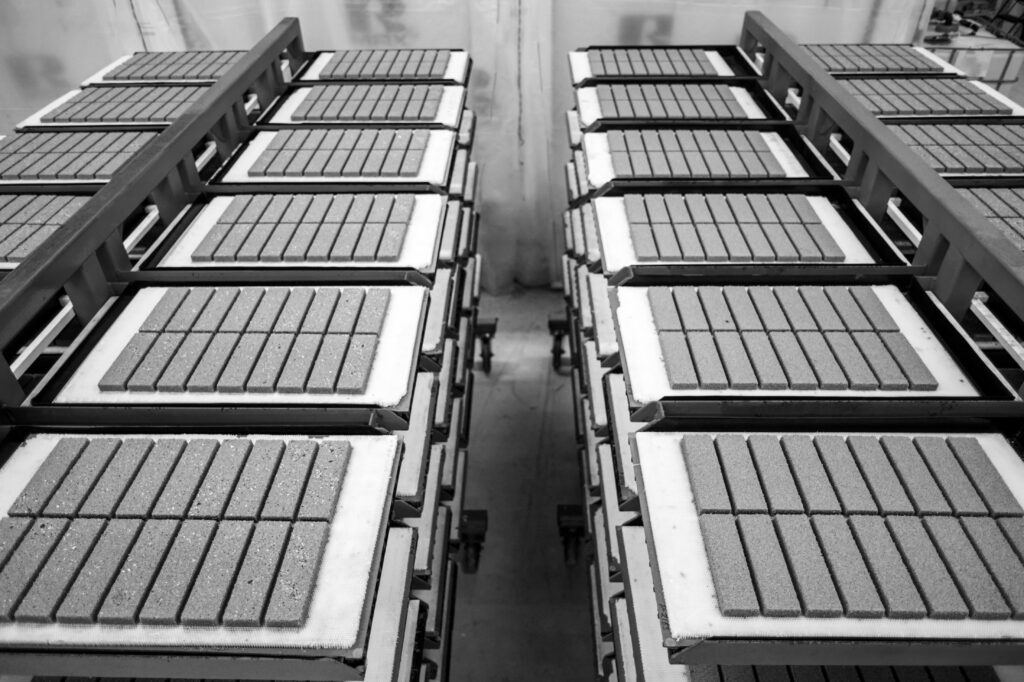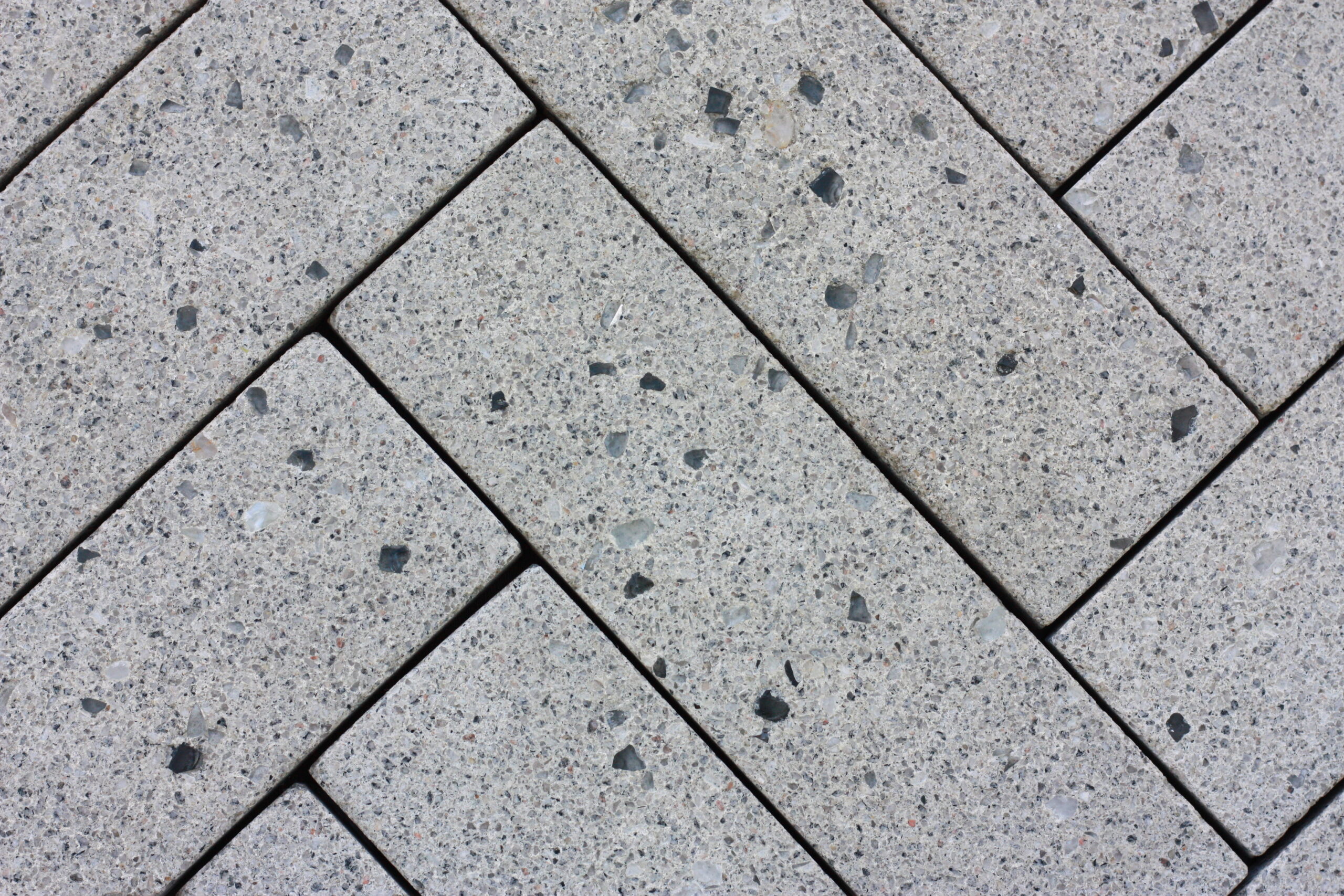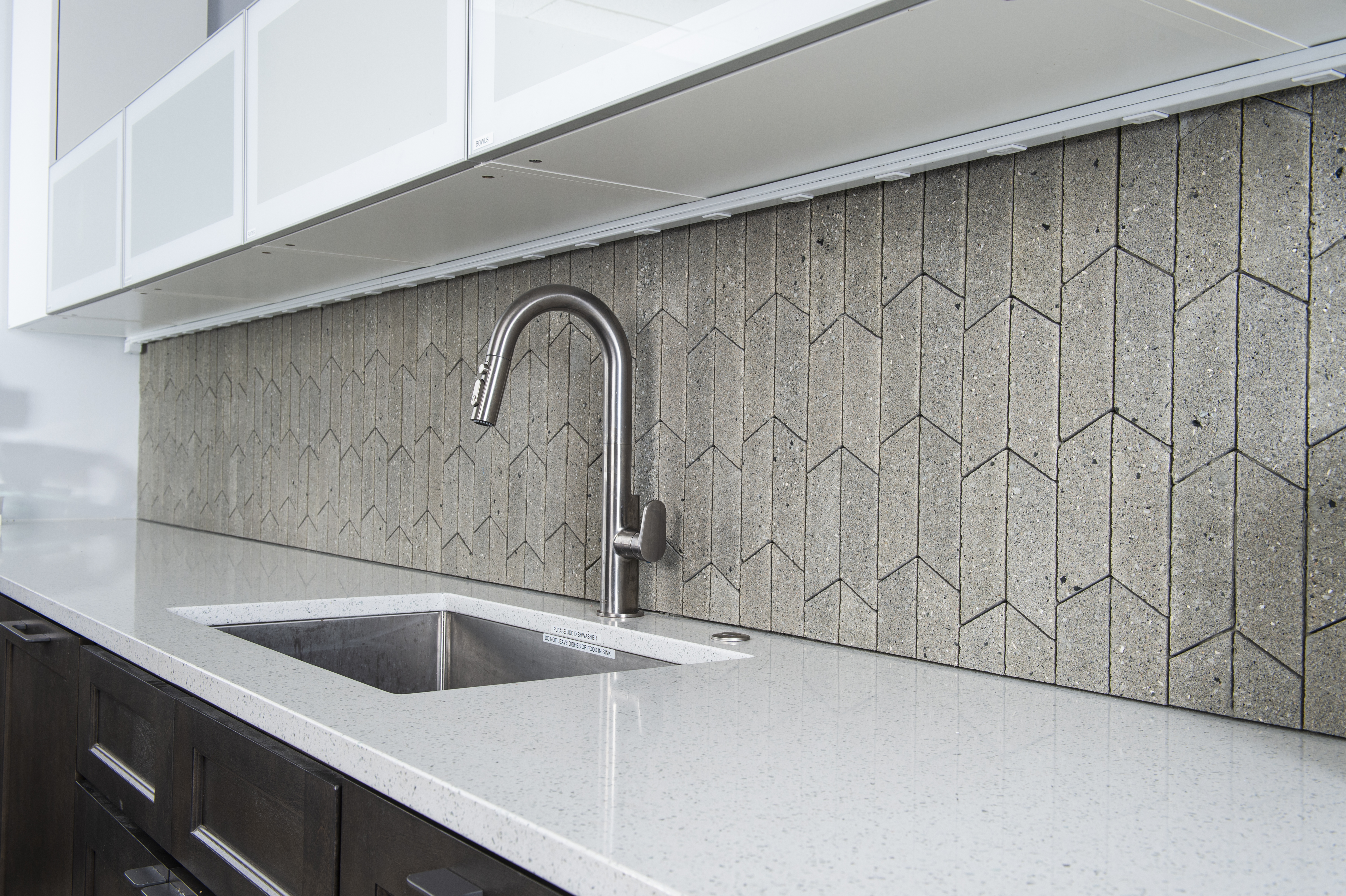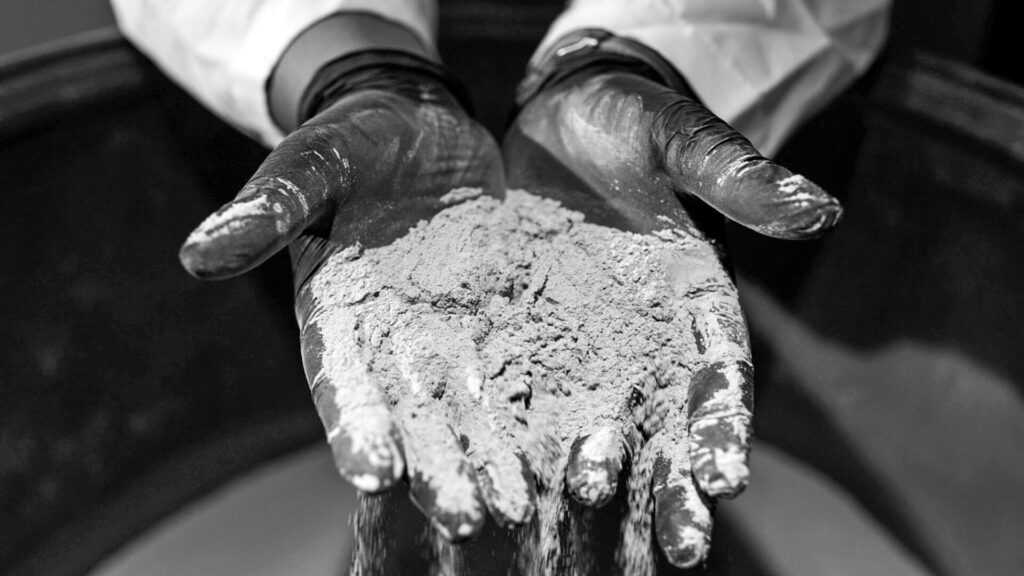Biomason produces Biolith precast concrete tile with bacteria that precipitate calcium carbonate in an aggregate matrix. The calcium carbonate biocement consists of inorganic crystals formed by the bacteria at ambient temperatures. Through technology, living organisms are directed to make stone in certain shapes. The resulting product is recyclable at the end of its life and has no inherent VOCs (Volatile Organic Compounds).
Traditional cement production is responsible for more than 8% of global CO2 emissions – that is four times more than the aviation industry.
Made of
- About 85% recycled aggregate.
- About 15% biocement.
Production Process
It takes less than 60 hours to make a fully cured Biolith tile.
- Cleaning and mixing recycled aggregate.
- Bacteria and nutrients are added to it.
- This is pressed into prefab moulds.
- The tiles are fed with a patented nutrient mixture of cement-forming components.
- Afterwards, the tiles are cleaned and polished for use in construction projects.


Applied
Biomason Biolith tile is suitable for outdoor and indoor, vertical and horizontal use in commercial, institutional and residential construction projects. They are currently used in projects across Europe and North America, including at the H&M Group headquarters and Martin Marietta’s office.

Environmental impact
- The absence of traditional cement ensures a much lower CO2 footprint.
- The production process is also radically different from traditional cement production, eliminating the inherent high carbon emissions.
Growth opportunities
The global tile, cement, and precast concrete markets are in the hundreds of billions of dollars. Within these markets, the demand for better sustainability and diverse options for climate-friendly materials is growing as awareness increases and regulations are introduced around the world to combat climate change. It is necessary to scale up the technology to meet the demand for biocement and to compete with traditional products. Their goal is that biocement should reduce 25% of the global carbon emissions from the concrete industry by 2030.



